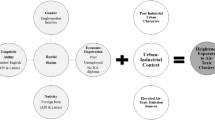Abstract
In order to determine whether principles of environmental justice have been violated, a large number of empirical studies have been carried out to ascertain whether minority and low-income populations are disproportionately exposed to industrial pollution. This study provides a comparative evaluation of two commonly employed proximity measures in GIS-based environmental equity assessment, examining their influence on the results of the analysis, and proposes a methodology for evaluating the significance of these results. 1990 census data on population characteristics and data from the 1995 EPA's toxic release inventory (TRI) for the City of Minneapolis, MN are used. These results also allow a preliminary assessment of environmental equity/inequity in potential exposure to airborne toxic chemicals for racial minorities, poor people and children in Minneapolis. In the third part of the paper we develop and employ a geographic randomization methodology for assessing the significance of these results.
Similar content being viewed by others
Author information
Authors and Affiliations
Corresponding author
Rights and permissions
About this article
Cite this article
SHEPPARD, E., LEITNER, H., MCMASTER, R. et al. GIS-based measures of environmental equity: Exploring their sensitivity and significance. J Expo Sci Environ Epidemiol 9, 18–28 (1999). https://doi.org/10.1038/sj.jea.7500023
Published:
Issue Date:
DOI: https://doi.org/10.1038/sj.jea.7500023
- Springer Nature America, Inc.
Keywords
This article is cited by
-
Environmental justice: geostatistical analysis of environmental hazards and socioeconomic factors—the case of Italy
GeoJournal (2023)
-
Does the environmental inequality matter? A literature review
Environmental Geochemistry and Health (2022)
-
Environmental justice in the context of commuters’ exposure to CO and PM10 in Bangalore, India
Journal of Exposure Science & Environmental Epidemiology (2015)
-
Direct observation of neighborhood stressors and environmental justice in the South Bronx, New York City
Population and Environment (2014)
-
Transboundary air pollution and environmental justice: Vancouver and Seattle compared
GeoJournal (2010)




